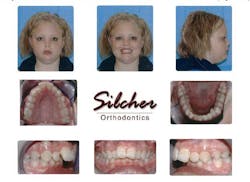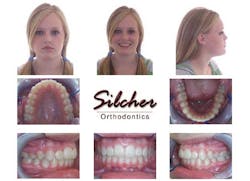Orthodontics: where am I?
As a well-seasoned, university-trained, still-practicing orthodontist, I have had the pleasure of watching my profession evolve over the years.
The pleasure has been derived from the gratifying and life-improving results seen in thousands of my patients. I have also enjoyed being associated with the people involved in the development of the specialty.
MORE READING |Orthodontics case study: treat 'the face' not 'the teeth'
I have been continually “trained” by people whose passion for improvement have led them to many sleepless nights and many spirited debates in an effort to bring their innovation to the forefront. Some of these people have been gracious throughout, while others have suffered from a level of arrogance that can be distracting. Nevertheless, I am so thankful for them all as our profession and our patients have benefited.
We have debated over extraction vs. nonextraction, fixed vs. removable, gnathological/occlusal norms, functional appliances vs. orthognathic surgery, TMD etiology and treatment, obstructive sleep apnea, lingual vs. labial, .018 vs. .022, headgear vs. “jumpers,” etc., and we will continue for the foreseeable future. It is my opinion that the size of the division between opposing sides in these debates is diminishing. Egos are less involved and the patients’ long-term welfare is more the prevailing factor. Well-designed studies are producing the evidence to support results first seen in the orthodontic clinic.
In my practice, I have used a wide assortment of the treatment modalities mentioned in the previous paragraph. My overall results have been a source of pride, reaching my pretreatment goals in a large majority of cases. It is easy to determine that most of the disappointing results are caused by a lack of commitment on the part of the patient. Poor oral hygiene and poor cooperation will compromise the overall treatment result every time. It is essential that everyone involved in orthodontic treatment have a staff and a protocol that requires and encourages the patient to be involved in the process.
Currently, I am using a low-force, low-friction, self-ligating fixed appliance system. My treatment times are consistently reduced and my results are consistently gratifying. My patients experience less discomfort during treatment than with more conventional systems. One must follow the bracket placement and wire sequencing protocols to enjoy the benefits. Super elastic nickel titanium wires and appropriate appointment intervals are essential. Those who try to use parts of the system but not others are headed for frustration and disappointment. Yes, this system is more expensive to use than many on the market, but the benefits to the practice and its patients are worth it. I can offer my patients both clear and metal brackets in the self-ligating system. It would be very difficult for me to return to conventional brackets.
I have been offering my patients clear aligner treatment for many years and feel I have learned where we can and cannot expect to reach our desired goals. It is important for both the doctor and patient to have a clear result in mind to ensure patient satisfaction.
The future of the profession, as with most disciplines, lies in the digital world. Intraoral scanners, CBCT imaging, 3-D computer treatment planning, and appliance manufacture are all beginning to be used in my practice and will become the norm in all practices in the future.
Here is a before-and-after of one of my cases …BEFORE CASE PHOTO --
AFTER CASE PHOTO --



